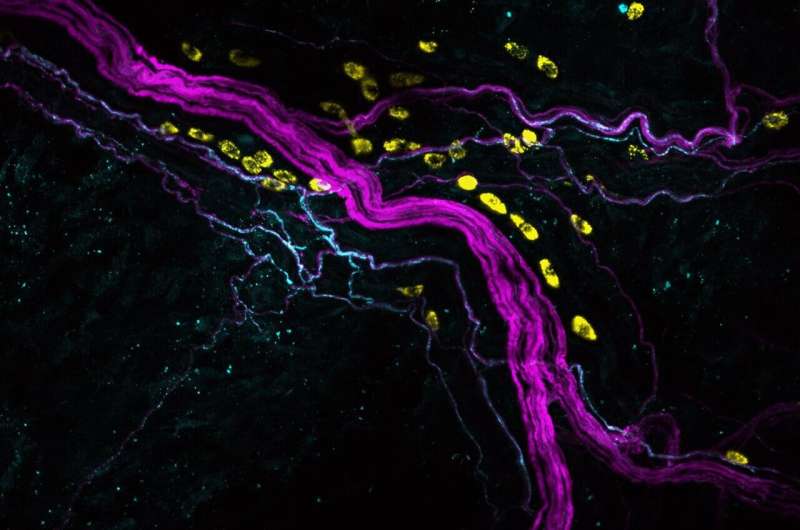This article has been reviewed according to Science X's editorial process and policies. Editors have highlighted the following attributes while ensuring the content's credibility:
fact-checked
peer-reviewed publication
trusted source
proofread
Mechanisms of postoperative pain reveal a path for localized and targeted therapy

An international research group led by MedUni Vienna and IMBA—Institute of Molecular Biotechnology, Vienna, has made significant progress in understanding the mechanisms that influence the sensation of pain after surgery.
Currently available treatment methods for post-operative pain can cause considerable side effects and are often only partially effective. The latest findings reveal a new possibility for localized and targeted therapy. The study has now been published in Science Immunology.
In their research, the team led by Philipp Starkl, Shane Cronin and Josef Penninger built on earlier findings on the role of the substance tetrahydrobiopterin (BH4) in neuropathic pain: the higher the concentration of BH4, the more severe the pain.
"Whether this correlation also applies to postoperative pain has not yet been investigated," says Josef Penninger from the Clinical Department of Laboratory Medicine at MedUni Vienna, IMBA, University of British Columbia, Vancouver, Helmholtz Center for Infection Research, Braunschweig.
In a series of experiments on mouse models with surgically induced skin injuries and with the help of novel analytical methods, the researchers revealed both the central role of BH4 in postoperative pain and the underlying mechanisms.
As it turned out, the innate immune system plays a decisive role here. The signaling cascade initiated by tissue injury starts in special immune cells (mast cells) that are positioned near pain-sensing nerves in the skin and act as a BH4 production site after an operation.
"In mice whose mast cells did not produce BH4, we observed a drastically reduced sensitivity to pain after surgery. Conversely, we found that increased BH4 production by mast cells was associated with increased pain," reports Shane Cronin of the Clinical Department of Laboratory Medicine at MedUni Vienna, IMBA.
With the key role of mast cells in pain perception, the research team has also found a possible solution to the puzzle of the function of these cells in the body. "Until now, we mainly knew their influence in allergic reactions and wondered why we have retained this cell type over hundreds of millions of years of evolution despite its harmful and dangerous role in allergies," says Philipp Starkl, from the Department of Medicine I at MedUni Vienna.
More information: Philipp Starkl et al, Mast cell–derived BH4 and serotonin are critical mediators of postoperative pain, Science Immunology (2024). DOI: 10.1126/sciimmunol.adh0545

















